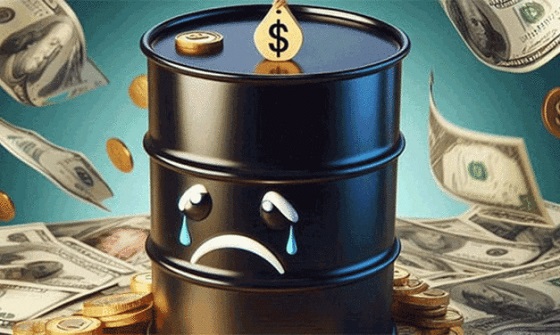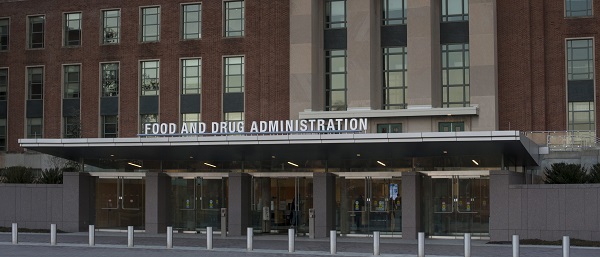Energy
What doubling the grid really means

From the Frontier Centre for Public Policy
” imagine if someone said in the next 25 years and 11 months, we must twin every single freeway, highway, grid road, street and alleyway, across the entire country, at the same time. And along the way, we have to replace up to 89 per cent of the existing infrastructure, as well, because it is no longer considered adequate “
Recently my daughter called me while on her way back from a Costco run in Regina, heading home to Weyburn.
She noted that it appears they are twinning the highway between Regina and Weyburn. Indeed, they are, I explained. And several years later, they’ll probably get it all the way to Weyburn. Maybe by the time I retire, if I live that long, they’ll get as far as Estevan.
Indeed, those timelines are likely pretty close to reality, if the twinning of Highway 16, from Saskatoon to Lloydminster, was any indication. I used to drive from Saskatoon to North Battleford to get the newspaper I was working for printed, with road construction for much of that. And it took several more years to complete the Battlefords to Lloydminster portion. I was fortunate enough to be present at the ceremony for that. It was significant enough that Premier Lorne Calvert came out.
Twinning a major highway is a substantial undertaking. Historically, Saskatchewan could usually only afford to work on three separate areas at a time, typically doing 20 kilometres per year in each stretch. That was all the provincial finances could handle.
By adding an additional two lanes, you are effectively doubling the capacity of that major piece of infrastructure. It’s not easy, not cheap, and not fast.
Now imagine if someone said in the next 25 years and 11 months, we must twin every single freeway, highway, grid road, street and alleyway, across the entire country, at the same time. And along the way, we have to replace up to 89 per cent of the existing infrastructure, as well, because it is no longer considered adequate.
You’d probably think they were living in a dreamland, or quite possibly stark raving mad.
And yet this is precisely what the federal government is proposing, nay, demanding, of Canadians from St. Johns to Victoria to Tuktoyaktuk.
In order to save the world from anthropogenic (manmade climate change) and attain a “Net Zero by 2050” economy, we must increase the size of the electrical grid by a factor of 2.5x. And for Saskatchewan and Alberta, who on any given day get up to 88 and 94 per cent of their power, respectively, from fossil fuels, they must also replace that existing gas and coal power generation with non-emitting sources, at the same time as they’re building out the truly massive expansion.
The first reference I saw of the federal Liberal government’s intentions of this was in the 2023 budget, which noted expanding the electrical grid by a factor of 2.2 to 3.4 times. By August, when they released the proposed Clean Electricity Regulations, the government seemed to settle on a factor of 2.5 times for the high demand scenario.
So in the highway twinning example, that would be adding three lanes, not two, to every two lane highway, grid road, street and alleyway. For an existing four lane highway, you would need to add six lanes. For a six lane freeway like Ontario’s 401, you’d need to add an additional nine lanes, finding the right of way space, concrete, rebar, gravel, and asphalt for all of this. Again, all at the same time, in 25 years and 11 months.
There are several thrusts that the federal government is pushing. First, by 2035, they want to totally eliminate gasoline and diesel from new light vehicle sales. There’s currently only eight retail hydrogen fueling stations listed by the federal government and Shell in the entire country. There could be more, but they’re not listed. Realistically this means battery-powered electric vehicles (EVs). But nearly all of those EVs will require charging at home each night (and especially during winter, pre-conditioning those batteries, keeping them warm).
So every residence in the country will require 30 amp chargers for cars, and 80 amp chargers for pickups.
But the government is also now moving away from fossil fuels for home, heating, too. This was indicative of Prime Minister Justin Trudeau’s pause on the carbon tax for home heating oil (primarily used in Atlantic Canada, although I grew up in a house with that system). To do so, the feds are offering “free” installations of heat pumps (which are wholly inadequate at -30 temperatures, let alone the -44 seen in Alberta in mid-January). And those could be up to another 50 amps, per heat pump.
And that’s just residential, never mind commercial or industrial.
The Clean Electricity Regulations are meant to force fossil fuel power generation to go away. And since wind frequently drops to nothing, and the sun goes down every day, the only real alternative is massive expansion of nuclear power across Canada. We’re talking small modular reactors by the dozen in Alberta, Saskatchewan, and to a lesser extent, Nova Scotia and New Brunswick.
On Jan. 30, SaskPower announced a formalized agreement with General Electric-Hitachi for small modular reactors. But when I asked how many they plan on building, the CEO wouldn’t say. But he did speak of increasing the provincial grid from 5,400 megawatt now to 13,000 to 15,000 megawatts.
Hydro Quebec just released their plans to double their grid. Yet, perhaps miraculously, they’re not saying how many, if any, new dams will need to be built.
This doubling of the grid (actually 2.5x, but that’s not easy to say), means we’re going to need not only additional generation, but transmission lines, distribution lines, back alley pedestals, and wiring to every home, business and factory in the country. Where the materials come from? The contractors and workers? Will Not In My Back Yard (NIMBY) be universally trampled on by eminent domain orders, for the good of the planet? Or will it be a continuation of Build Absolutely Nothing Anywhere Near Anything Syndrome (BANANAS)?
A very real example is the Trans Mountain Pipeline. The original was built in something like 16 months, from scratching dirt to oil flowing. The expansion is taking a hell of a lot longer. Work started in 2018, and it is still not done. Any change in the plan had to go back to the Canadian Energy Regulator. Some First Nations fought it every step of the way.
Now do this for every single piece of existing power infrastructure. Wrap your head around that for a minute.
This supposed energy transition, from fossil fuels to electric everything, does not work if you cannot build out the electrical infrastructure, everywhere, and essentially all at in the next 25 years and 11 months. Either the timelines need to be stretched to a generational scale, or more realistically, the whole concept needs to be entirely rethought.
As Saskatchewan Premier Scott Moe has said more than once, “We will not attempt the impossible when it comes to power production.”
Brian Zinchuk is editor and owner of Pipeline Online, and occasional contributor to the Frontier Centre for Public Policy. He can be reached at [email protected].
Daily Caller
US Halts Construction of Five Offshore Wind Projects Due To National Security


From the Daily Caller News Foundation
Interior Secretary Doug Burgum leveled the Trump administration’s latest broadside at the struggling U.S. offshore wind industry on Monday, ordering an immediate suspension of activities at the five big wind projects currently in development.
“Today we’re sending notifications to the five large offshore wind projects that are under construction that their leases will be suspended due to national security concerns,” Burgum told Fox Business host Maria Bartiromo. “During this time of suspension, we’ll work with the companies to try to find a mitigation. But we completed the work that President Trump has asked us to do. The Department of War has come back conclusively that the issues related to these large offshore wind programs have created radar interference that creates a genuine risk for the U.S.”
Predictably, reaction to Burgum’s order was immediate, with opponents of offshore wind praising the move, and industry supporters slamming it. In Semafor’s energy-related newsletter on Tuesday, energy and climate editor Tim McDowell quotes an unnamed ex-Energy Department official as claiming, “the Pentagon and intelligence services, which are normally sensitive to even extremely low-probability risks, never flagged this as a concern previously.” (RELATED: Trump Admin Orders Offshore Wind Farm Pauses Over ‘National Security Risks’)
Yet, a simple 30-second Google search finds a wealth of articles going back to as early as October 2014 discussing ways to mitigate the long-ago identified issue of interference with air defense radars by these enormous windmills, some of which are taller than the Eiffel Tower. It is a simple fact that the issue was repeatedly raised during the Biden Administration’s mad rush to speed these giant windmill operations into the construction phase by cutting corners in the permitting process.
In May, 2024, the Bureau of Ocean Energy Management’s (BOEM) own analysis related to the Atlantic Shores South project contains a detailed discussion of the potential impacts and suggests multiple ways to mitigate for them. An Oct. 29, 2024 memo of understanding between BOEM and the Biden Department of Defense calls for increased collaboration between the two departments as a response to concerns from members of Congress and others related to these very long-known potential impacts.
The Georgia Tech Research Institute published a study dated June 6, 2022 detailing “Radar Impacts, Potential Mitigation, from Offshore Wind Turbines.” That study was in fact commissioned by the National Academies of Sciences, Engineering, and Medicine (NASEM), a private non-profit that functions as an advisory group to the federal government.
Oh.
A report published in February 2024 by International Defense Security & Technology, Inc. describes the known issues thusly:
“Wind turbines can create clutter on radar screens in a number of ways. First, the metal towers and blades of wind turbines can reflect radar signals. This can create false returns on radar screens, which can make it difficult to detect and track real targets.
“Second, the rotating blades of wind turbines can create a Doppler effect on radar signals. This can cause real targets to appear to be moving at different speeds than they actually are. This can also make it difficult to track real targets.”
The simple Google search I conducted returns hundreds of articles dating all the way back to 2006 related to this long-known yet unresolved issue that could present a very real threat to national security. The fact that the Biden administration, in its religious zeal to speed these enormous offshore industrial projects into the construction phase, chose to downplay and ignore this threat in no way obligates his successor in office to commit the same dereliction of duty.
Some wind proponents are cynically raising concerns that a future Democratic administration could use this example as justification for cancelling oil and gas projects. It’s as if they’ve all forgotten about the previous four years of the Autopen presidency, which featured Joe Biden’s Day 1 order cancelling the 80% completed Keystone XL pipeline, a year-long moratorium on LNG export permitting, an attempt to set aside more than 200 million acres of the U.S. offshore from future leasing, and too many other destructive moves to detail here.
Again, a simple web search reveals that experts all over the world believe this is a real problem. If so, it needs to be addressed as a matter of national security. Burgum is intent on doing that. All half-baked talking points aside, this really isn’t complicated.
David Blackmon is an energy writer and consultant based in Texas. He spent 40 years in the oil and gas business, where he specialized in public policy and communications.
Energy
While Western Nations Cling to Energy Transition, Pragmatic Nations Produce Energy and Wealth


From the Daily Caller News Foundation
History will likely remember 2025 as the year energy corporatists finally stopped pretending there is a climate crisis. For a decade, a bizarre theater of the absurd played out as titans of the oil and gas industry apologized for their core business while pledging allegiance to a “green transition” that existed mostly in the imaginations of Western bureaucrats. But the curtain has seemingly fallen.
ExxonMobil, one of the world’s largest energy producers, has slashed $10 billion from its low-carbon investment commitments through 2030. Simultaneously, the company announced that it expects $25 billion in earnings growth from 2024 to 2030 to be powered primarily by increases in oil and gas production, which will push daily output to 5.5 million barrels of oil equivalent by the end of the decade.
This is not a company abandoning climate responsibility but rather at last recognizing what has long been obvious: The path prescribed by the climate industrial complex is economically destructive and operationally impossible – even with massive government subsidies.
Dear Readers:
As a nonprofit, we are dependent on the generosity of our readers.
Please consider making a small donation of any amount here.
Thank you!
For years, the global energy strategy has been surreal. Companies that built the modern world on the back of energy-dense hydrocarbons indulged those celebrating the arrival of wind turbines and solar panels to power civilization. But reality, stubborn and unforgiving, has interrupted the psychedelic revelry.
ExxonMobil’s low-carbon investments will be paced to policy support and customer demand, says the company. That is corporate speak meaning that spending on green projects is paused unless the government – using our tax dollars – subsidizes the risk or until a market exists.
Megaprojects, once heralded as the future, are now in line for deferral. Why? Because without taxpayer handouts, the economics of trying to bury underground a plant food like carbon dioxide simply do not work – and defy common sense.
The energy sector is pivoting from a strategy of “grow clean at all costs” to “returns first, transition last.” “Green” projects are being relegated to a secondary capital bucket – a token for good PR instead of a core activity.
Europe’s Shell and Aker BP and Canada’s Enbridge have withdrawn from the Science Based Targets initiative to establish “science-based emissions reductions.” This was a retreat from what is described as a “credible, science-based net-zero framework” because there was neither credibility nor science. It was a political suicide pact. The energy giants looked at the cliff’s edge and refused to jump.
British multinational BP, having abandoned its promise to go “Beyond Petroleum,” has raised its oil and gas spending and softened its renewable targets.
ENEOS Holdings, a Japanese refiner, has discarded hydrogen production targets, with CEO Tomohide Miyata explaining that “the shift toward a carbon-neutral society appears to be slowing.”
These U-turns represent a renaissance in policy realism. Energy needs do not disappear because politicians make speeches at climate summits or corporations allocate funds to ESG programs or governments attempt to control consumption and choices of appliances and automobiles.
Second thoughts about an inevitably doomed “green” transition is a victory for the single mother in the U.S. trying to budget for winter heating and for the small business owner in the U.K. whose margins are crushed by one of the highest commercial electricity rates in the world. And for the billions of people in developing nations, this pivot could be salvation from generational poverty.
The question now is whether governments will recognize what corporations have made clear: that the energy transition was a fantasy infused with scientific language and draped in moralistic gingerbread. Or will they continue to increase subsidies and regulations?
Very likely, there will be a bifurcation: on the one hand, western bureaucracies, particularly in Europe, continuing an economic decline under mandates and taxes, and on the other, pragmatic governments, many of them in Asia, pursuing prosperity with fuels and technologies that work.
Vijay Jayaraj is a Science and Research Associate at the CO2 Coalition, Fairfax, Va. He holds an M.S. in environmental sciences from the University of East Anglia and a postgraduate degree in energy management from Robert Gordon University, both in the U.K., and a bachelor’s in engineering from Anna University, India. He served as a research associate with the Changing Oceans Research Unit at University of British Columbia, Canada.
-

 Alberta2 days ago
Alberta2 days agoOttawa-Alberta agreement may produce oligopoly in the oilsands
-

 Energy2 days ago
Energy2 days agoWestern Canada’s supply chain for Santa Claus
-

 Energy2 days ago
Energy2 days agoThe Top News Stories That Shaped Canadian Energy in 2025 and Will Continue to Shape Canadian Energy in 2026
-

 International2 days ago
International2 days ago$2.6 million raised for man who wrestled shotgun from Bondi Beach terrorist
-

 Frontier Centre for Public Policy18 hours ago
Frontier Centre for Public Policy18 hours agoTent Cities Were Rare Five Years Ago. Now They’re Everywhere
-

 armed forces19 hours ago
armed forces19 hours agoRemembering Afghanistan and the sacrifices of our military families
-

 Fraser Institute19 hours ago
Fraser Institute19 hours agoHow to talk about housing at the holiday dinner table
-

 Fraser Institute3 hours ago
Fraser Institute3 hours agoCarney government sowing seeds for corruption in Ottawa









